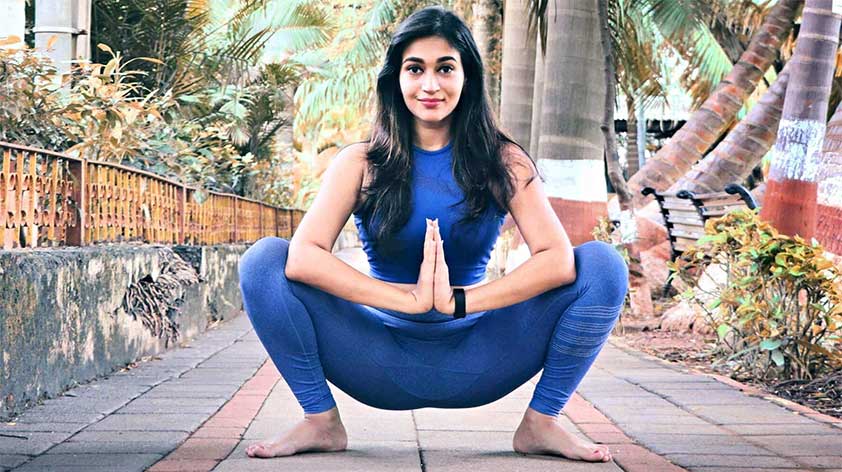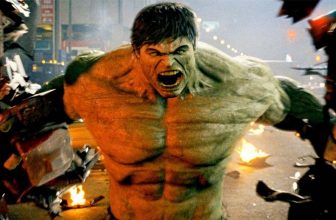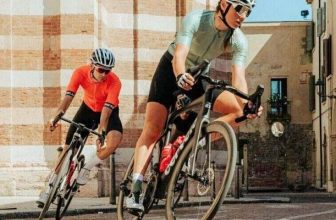
Malasana is a popular yoga pose which has many names; Garland Pose, Upavesasana and it’s also commonly known as a ‘Deep Squat’, however the wider-foot stance adopted widely in the west definitely identifies it as Malasana. Eastern cultures have, for centuries worked, socialised and carried out cultural ceremonies, meditations and rituals in the crouching position and therefore find it far easier to flex their hip and ankle joints than most westerners.
However, people in the East as well as the West are becoming less and less mobile in this area, with the overuse of 90-degree angle legged chairs, driving seats and computer screens that demand huge amounts of desk time. Learn how not to be a victim of a negative cultural ‘habit’ in Yoga: Garland Pose (Malasana) — Top 5 Health Benefits!
Although we belong to a world of travellers, we all still just transit between airport waiting rooms, airplanes, dinner tables, cinemas, computer desks, classroom desks, doctor’s waiting rooms but rarely properly ground our feet or use our hips in such deep or extended ways. Why do we need to though?
1. Balance
The foundational balance that is required to sit in Malasana heavily affects the stability in your sacroiliac joint, stretching deeply into your groin, hips and ankles. The more these muscles balance out and strengthen, the more the feet also become more evenly grounded as you build greater awareness of any instability between your left and right sides.
2. Stimulation through Compression
Deep compression in the groin and sacroiliac joint can stimulate and strengthen your colon helping eliminate waste and improve your digestive system. In turn, this also increases the blood flow around the pelvis.
3. Opens Hips & Releases Emotions
The increased blood flow balances your hormones and improves your metabolism which in turn calms your energetic body.
The circulatory system is supported by your fascia (connective tissue) and therefore it stimulates and stretches these tissues as the blood circulates through it and this is how you start to open your hips as the fascia realigns itself.
4. Deep Lower Pelvic Floor Activation
Activation occurs due to stabilising your feet and not wanting to roll backwards – yes, all the benefits are interlinked! In strengthening the connection with your pelvic floor you tone your abdominal muscles and keep your entire hip and joint area healthy.
When you lift your chest to stabilise the pose you strengthen your thoracic spine (mid back zone) at the same time as engage the abdominals and your lower pelvis.
5. Stretches Your Ankles, Hamstrings, Back & Neck
This well-flexed angle at your ankles causes stretching and compression of your hamstrings and calf muscles. At first this can feel a little uncomfortable on the ankle and put strain on the shins but as the fascia reforms itself the stretch between the calf and the shin balances out and the weight becomes distributed better making it easier to balance. You can also visualise all of your connective tissues, and tendons becoming powerful and sinewy like steel wires supporting superstructure buildings.
This equilibrium works up to your back and neck as you will have enough balance to start lifting and lengthening the spine. There are lots of tendon and cartilage micro-adaptations taking place which take time, so stick with it!
On the surface, this may just appear to be another squat that any PT could advise you on, but there’s a lot more to it. The longer you can hold this pose meditatively in a more or less static manner, (rocking a little up onto tip toes and back to flat feet) the more flexion of your ankles, stretching and strengthening of your glutes, groin, hips, spine and upper torso as well as toning of your core will take place. In addition, gentle digestive stimulation and hormonal regulation rank among the internal benefits of such a simple ‘drop through’ the hips!
Do you practice Malasana? What’s your favourite yoga pose and what benefits does it confer on you? Let us know in the comments below and join in the conversation on Facebook, Twitter & Instagram. Click for MORE YOGA!









